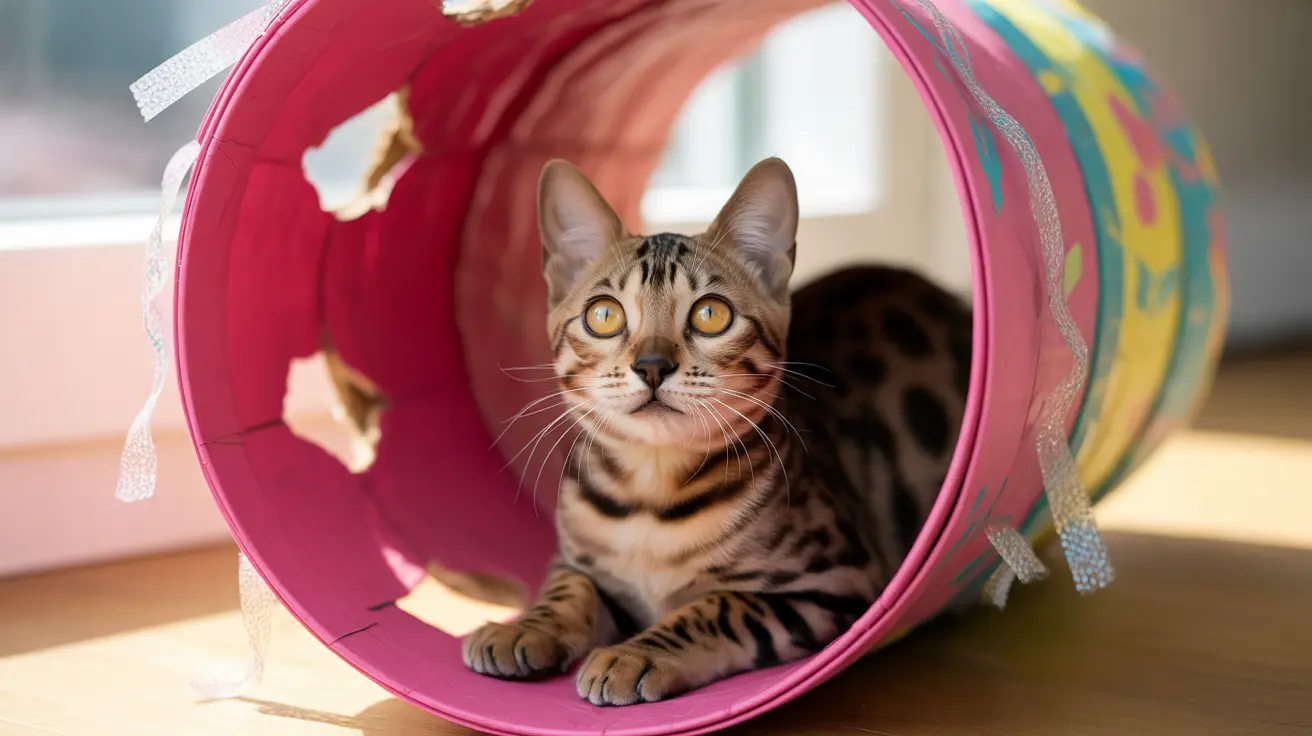Creating a DIY cat tunnel is an excellent way to provide your feline friend with enrichment, exercise, and a safe space to explore. Whether you're looking to build an indoor hideaway or an outdoor adventure path, this comprehensive guide will walk you through everything you need to know about crafting the perfect cat tunnel.
From choosing materials to understanding safety considerations, we'll explore how to create a tunnel that not only entertains your cat but also promotes their physical and mental well-being. Let's dive into the world of DIY cat tunnels and discover how you can create an engaging play space for your pet.
Essential Materials for Your DIY Cat Tunnel
The success of your cat tunnel project starts with selecting the right materials. For indoor tunnels, consider using:
- Fabric or nylon material
- PVC pipes for structure
- Reinforced wire mesh
- Crinkle material for sensory stimulation
- Zip ties and fasteners
For outdoor tunnels, focus on weather-resistant options such as:
- Galvanized wire mesh
- Pressure-treated lumber
- Weather-resistant PVC
- Protective coatings or paint
- Heavy-duty stakes or anchors
Design Features That Cats Love
When planning your DIY cat tunnel, incorporate these engaging features to maximize your cat's interest and enjoyment:
- Multiple entry and exit points
- Peek holes and windows
- Various tunnel widths (13-16 inches recommended)
- Textured surfaces for scratching
- Attached toys or dangling elements
Construction Steps for Success
Planning and Preparation
Begin by measuring your space and determining the tunnel's layout. Consider your cat's size and activity level when deciding on dimensions. For multi-cat households, plan for wider tunnels or multiple pathways.
Assembly Process
Follow these steps for a sturdy construction:
- Create a stable frame using PVC or wood
- Attach mesh or fabric securely
- Reinforce all connection points
- Install safety features like peek holes
- Add weatherproofing for outdoor tunnels
Benefits of DIY Cat Tunnels
Cat tunnels offer numerous advantages for your pet's overall well-being:
- Physical exercise and weight management
- Mental stimulation through exploration
- Stress reduction and anxiety relief
- Safe outdoor access when properly constructed
- Enhanced territorial satisfaction
- Improved cat-owner bonding opportunities
Maintenance and Safety Guidelines
Keep your DIY cat tunnel safe and functional with these maintenance tips:
- Regular inspection of all components
- Prompt repair of any damage
- Routine cleaning and sanitization
- Weather protection for outdoor installations
- Periodic stability checks
Frequently Asked Questions
How can I build a safe and durable DIY cat tunnel for outdoor use?
To build a safe outdoor cat tunnel, use weather-resistant materials like galvanized wire mesh and pressure-treated lumber. Ensure proper anchoring to the ground, include adequate drainage, and apply protective coatings to prevent weather damage. Regular maintenance and inspection are essential for longevity.
What materials are best for making indoor versus outdoor cat tunnels?
Indoor tunnels work well with lightweight materials like fabric, nylon, and PVC pipes. Outdoor tunnels require more durable materials such as galvanized wire mesh, pressure-treated wood, and weather-resistant PVC. Always choose materials based on intended use and exposure to elements.
How do cat tunnels benefit my cat's physical and mental health?
Cat tunnels promote exercise through running and climbing, helping maintain healthy weight and muscle tone. They also provide mental stimulation by satisfying natural instincts for exploration and hunting. The enclosed space offers security and stress relief, particularly beneficial for anxious cats.
What design features should I include to make a cat tunnel engaging and fun?
Include multiple entry/exit points, peek holes, varying tunnel widths, and attached toys. Consider adding different textures, crinkle materials, and elevation changes. For extra engagement, incorporate scratching surfaces and hiding spots throughout the tunnel system.
How do I maintain and keep a DIY cat tunnel safe and clean over time?
Regularly inspect for wear and tear, clean according to material type (machine wash for fabric, soap and water for rigid structures), and check all connection points. For outdoor tunnels, ensure proper drainage and weather protection, and replace any damaged components promptly.
A DIY cat tunnel is more than just a play space—it's an investment in your cat's health and happiness. By following these guidelines and maintaining your creation properly, you'll provide your feline friend with years of safe entertainment and enrichment.






